| |
|
INSHU: Building Bridges to Eliminate HCV in PWID
Building Bridges to Reach People Who Inject Drugs with the Goal to Eliminate HCV
|
| |
| |
Reported by Jules Levin
7th Intl Symposium on Hepatitis Care in Substance Users
Cascais, Portugal 19-21 Sept 2018
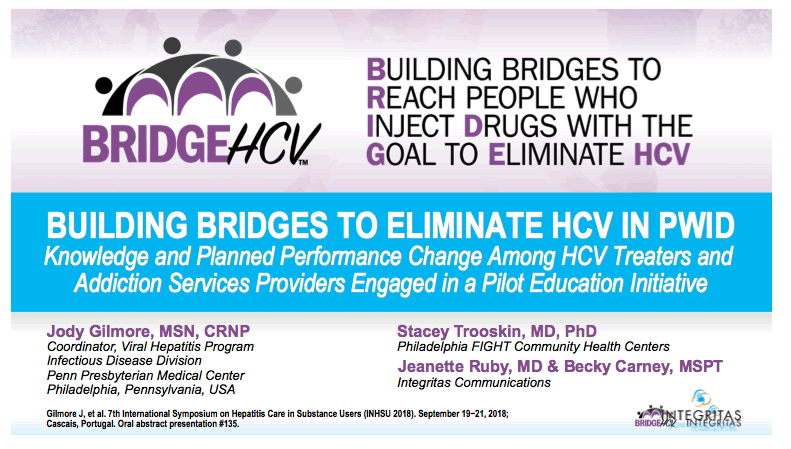
oGood afternoon. My name is Jody Gilmore. Today I will summarize knowledge and planned performance gains among HCV treaters and addiction-services providers who participated in a pilot education initiative called BRIDGE HCV.
oThe goal of this initiative is to build community-based, interprofessional collaboration within major metropolitan centers to eliminate HCV among people who inject drugs (PWID).
oI am a certified nurse practitioner and Coordinator of the Viral Hepatitis Program in the Infectious Disease Division at Penn Presbyterian Medical Center in Philadelphia, Pennsylvania, USA.
oThe other authors of this abstract are Stacey Trooskin, MD from Philadelphia FIGHT Community Health Centers and Chair of the BRIDGE HCV 2017 initiative, and Jeanette Ruby, MD and Becky Carney, MSPT who are with Integritas Communications-the organization that had the vision for this intervention, developed its content, and implemented the initiative.
oI also want to recognize Alain Litwin, MD at Albert Einstein College of Medicine and Mark Sulkowski, MD of Johns Hopkins Medicine for their roles on the initiative's steering committee.
oI also acknowledge and thank the many clinicians and addiction-services providers in Philadelphia who participated in this initiative ─ and their patients ─ for whom these professionals strive to provide optimal care and support.
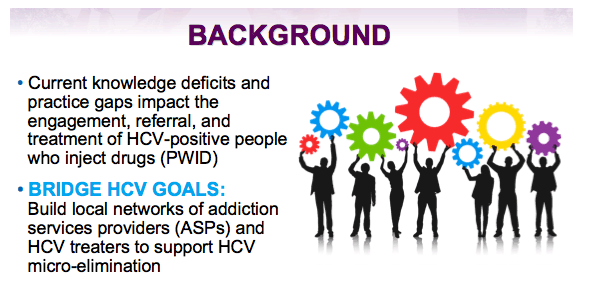
The overall goal of the BRIDGE HCV pilot initiative is to build local networks of addiction-services providers and HCV treaters to support HCV micro elimination
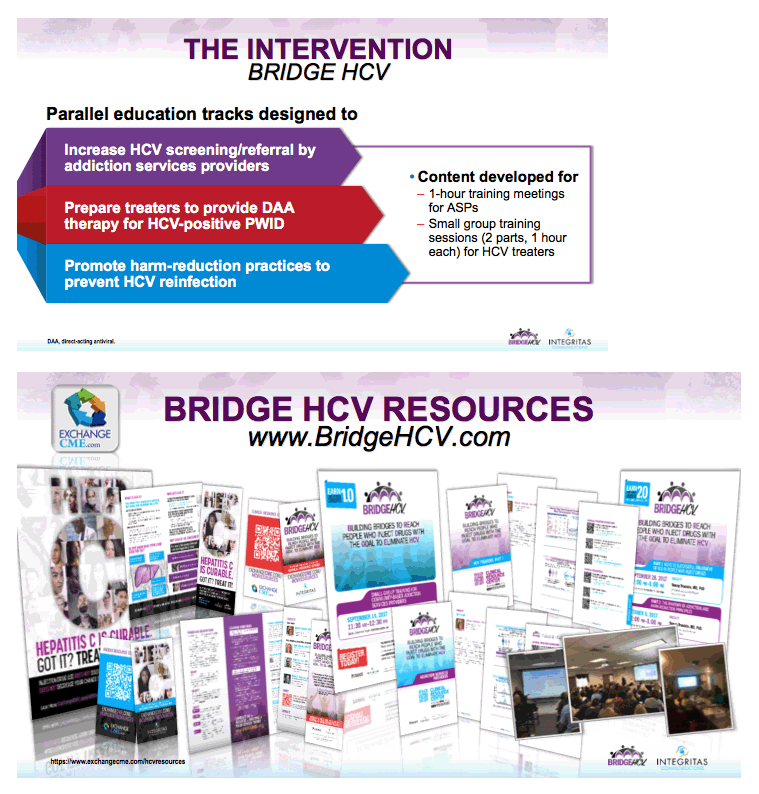
We developed practical resources and materials for HCV treaters, addiction-services providers, and patients:
oHCV treaters and addiction-services providers
oProgram slide booklets
oOnline clinical resource center (including suggested resources for patients)
oPatients
oHCV awareness poster
oPatient education poster
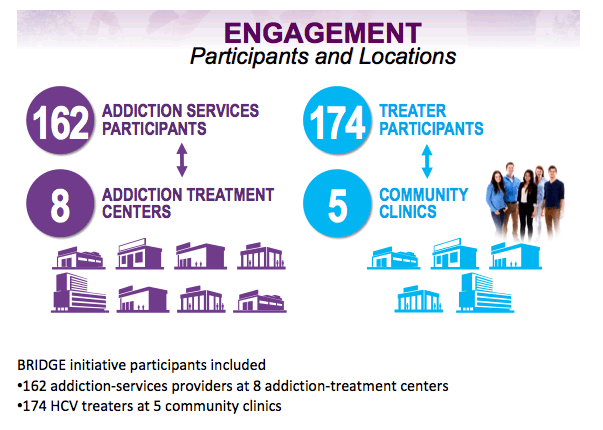
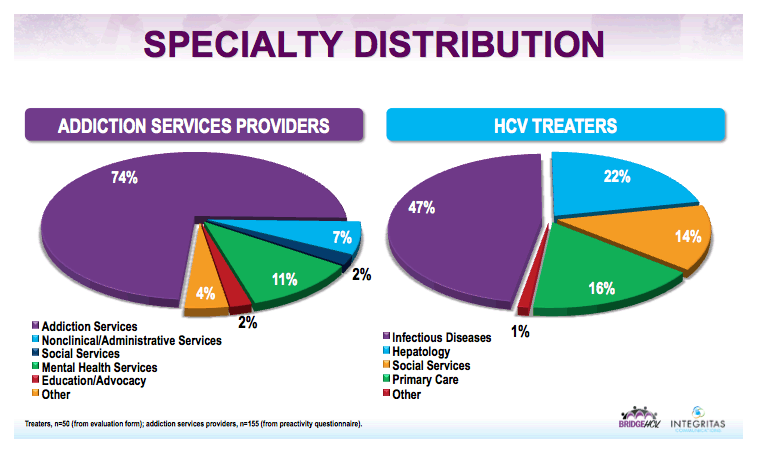
Treaters, n=50 (from evaluation form); addiction services providers, n=155 (from pre activity questionnaire)
Addiction-services providers:
o74% of the addiction-services providers indicated addiction services as their specialty
oMental health services, nonclinical/administrative services, social services, education/advocacy, and "other" made up the remaining 26% of reported specialties
HCV treaters:
o47% of the HCV treaters indicated infectious diseases as their specialty
o22% indicated hepatology, 16% primary care, and 14% "other"
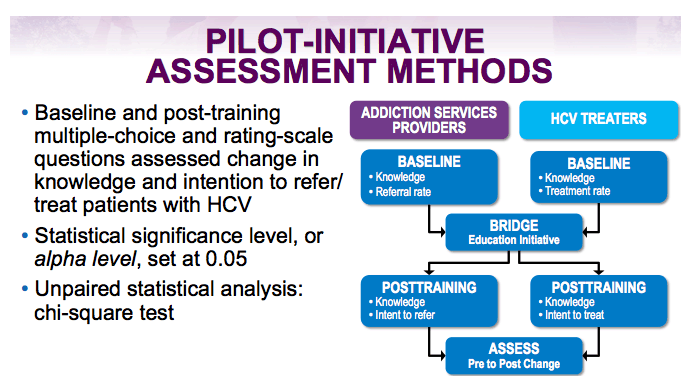
oBaseline and post-training multiple-choice and rating-scale questions were used to assess change in knowledge and intention to refer/treat patients with HCV
oThe chi-square test was used to identify any statistically significant change from baseline to post-training assessment
oFor unpaired statistical analysis with nominal data, the significance level, or alpha level, was set at .05
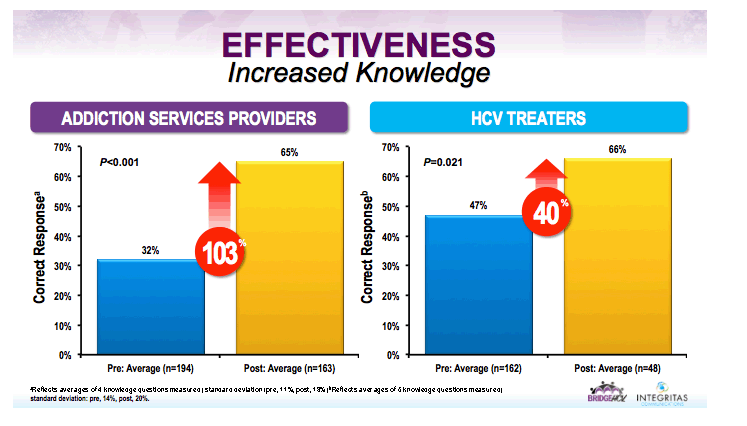
aReflects averages of 4 knowledge questions measured; standard deviation: pre, 11%, post, 18%; bReflects averages of 5 knowledge questions measured; standard deviation: pre, 14%, post, 20%.
For addiction-services providers, using 4 questions for knowledge assessment, mean percent correct scores increased significantly -
o A 103% increase from 32% correct at baseline (with n=194), to 65% correct post training (with n=163)
For HCV treatment providers, using 5 questions for knowledge assessment, mean percent correct scores also increased significantly
o A 40% increase from 47% correct at baseline (with n=162), to 66% correct post training (with n=48)
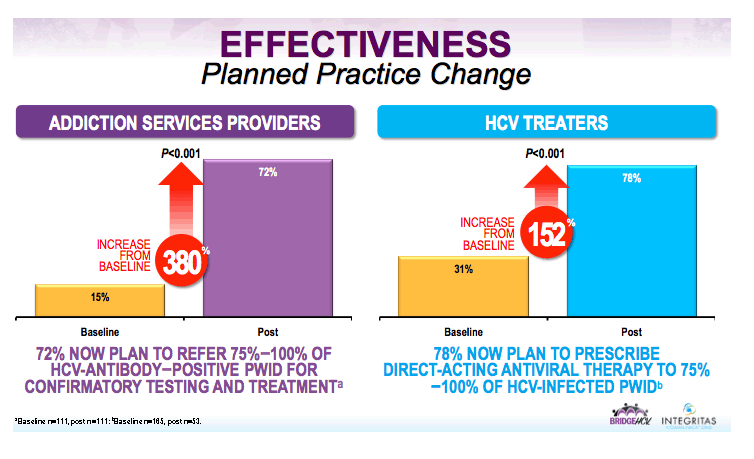
aBaseline n=111, post n=111; bBaseline n=165, post n=53.
Addiction-services providers' self-reported frequency of referring HCV-antibody-positive people who inject drugs for
confirmatory testing/treatment increased significantly (P<.001): a 380% increase from baseline
o15% were referring 75−100% of their clients at baseline (with n=111)
o72% planned to refer 75−100% of their clients post training (with n=111) ─ the data were unpaired
HCV treaters' self-reported frequency of prescribing direct-acting antiviral therapy to people who inject drugs increased
significantly (P<.001): a 152% increase from baseline
o31% of providers treated 75−100% of people who inject drugs at baseline (with n=165)
o78% of providers planned to treat 75−100% of PWID post training (with n=53)
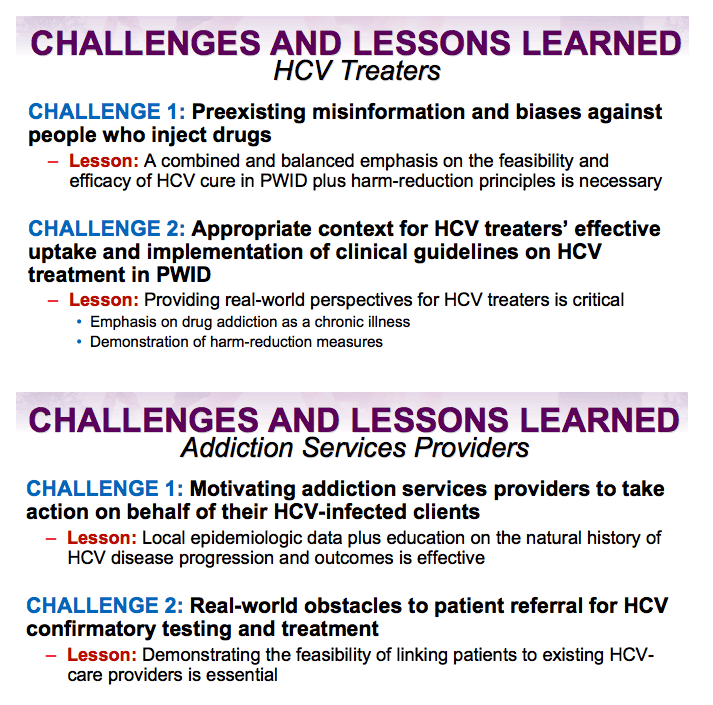
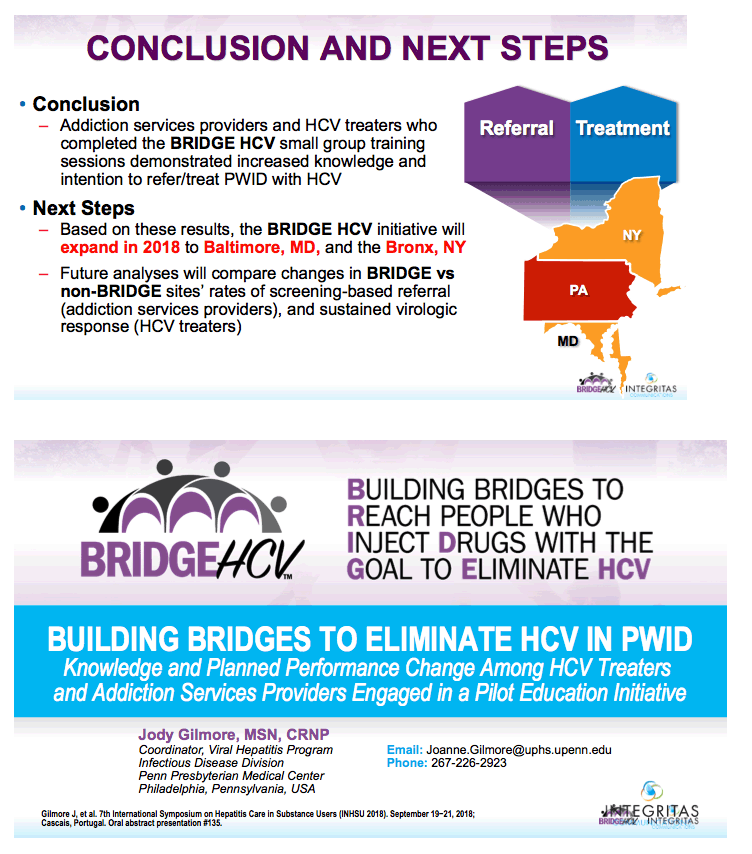
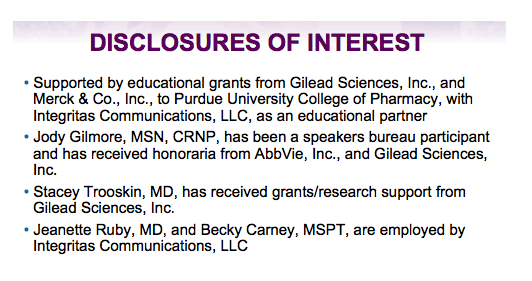
| |
| |
| |
|
|
|